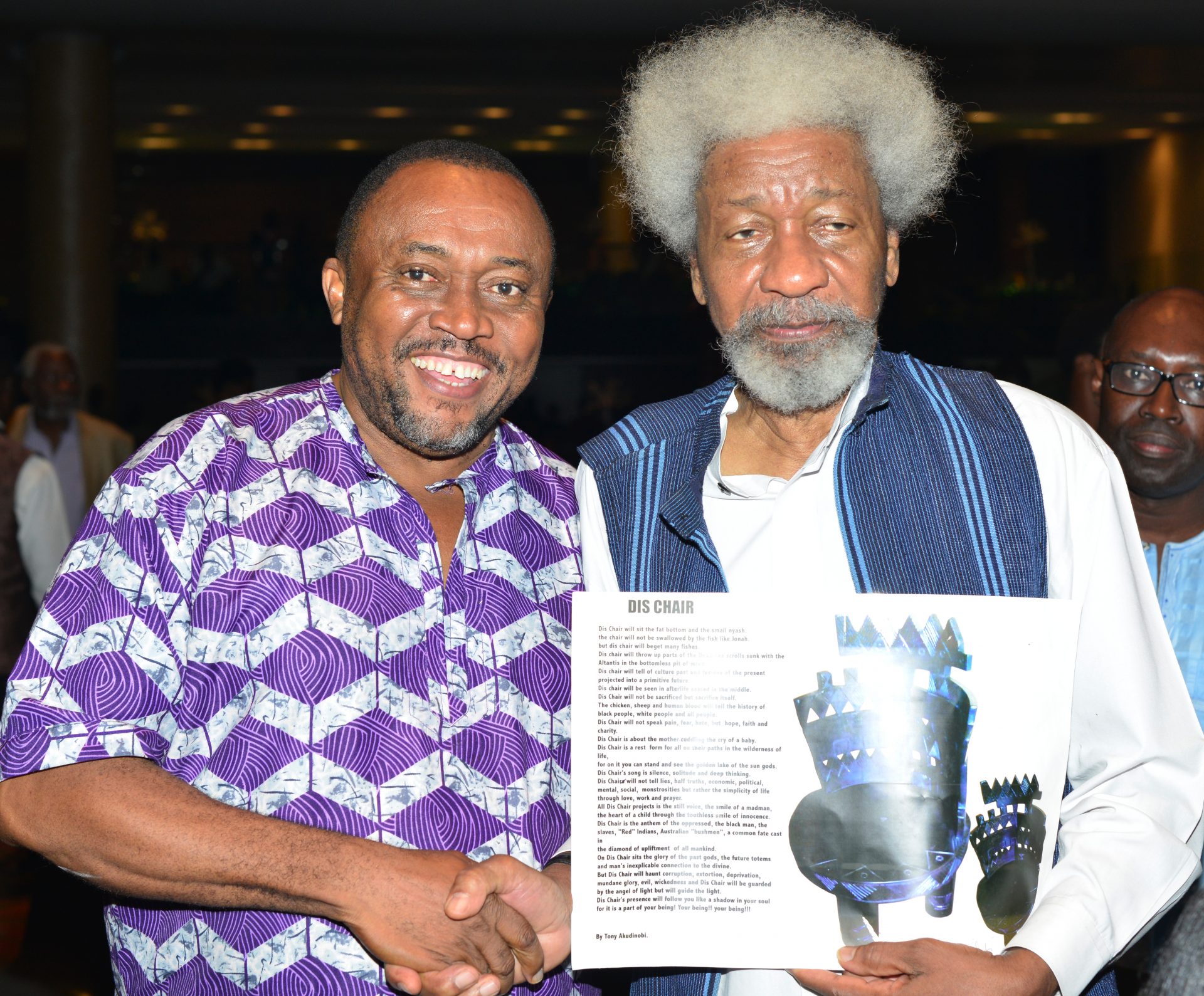The iroko stands tall and mighty, stretching its boughs across the firmament. The song of the heart is in arresting dialogue with the iroko, the one tree that makes the vast forest of Africa.
The chair I sit on, designed and constructed by the maverick Tony Akudinobi of Hammerhead Ethnika, shares a poetic bond with the iroko under which I muse.
Back in time, I read the story by the master writer Obi B. Egbuna entitled “If Only Rivers Could Talk”. I believe that rivers do talk, but most men lack the knowledge of the language of rivers.
I can hear the iroko talk, and he is speaking to me in the guttural tongue of the ages. The iroko is Africa writ large, and the dialogue between us spans centuries.
It is my fervent prayer to dig into the pith of the iroko to fetch the tropical rain-stone hidden therein. And the rain is destined to fall…
It takes dialogue of the higher realms to latch on to the essence instead of being carried away by the accident of being.
It is kindling to awaken to the spiritual insights unleashed on all corners and comers by the presiding iroko.
The path to sound grounding and understanding can only be gained through a journey of the relentless soul.
The spirit inspirits the physical in a dialogue that blends magic and tool-making into designs that uplift humankind.
In the grip of inspiration, Tony Akudinobi utters the wondrous words: “The silent poetry shapes the tree from the darkness on Earth to the light above. Man listens to the songs of the flowers in finding the keys that make the pitches, bridges and the stirring solos. The dialogue exists in each being on his path to the Golden Lake of the Sungods. This dialogue in context and content comes between his efforts, experiences and the universal forces acting in the light to guide and thresh the plans, actions and errors rooted as lampposts on this path. The power of the Unspoken Word lies in the thoughts, actions and inactions calculated and borne unto the path to assume a life-force of its own.”
The dialogue with the iroko takes strage turns and byways. According to Akudinobi, “Memories of culture reign in glory when the iroko opened its history. The High Priest smiled to the chant while the offspring cried as it took so long for the Cross and the Truth to be told. Memories linger of Father, Mother, Brother and Sister sold away. The children drank the last cup of the herbs, smiled to the stars and asked for the dregs.”
The moon and the stars, the sun and the skies: they all bring to bear the measure of the iroko. Under the shelter of the iroko, the moonlight games at the village soar into the stratosphere. As Chinua Achebe wrote in Things Fall Apart, “When we gather together in the moonlit village ground it is not because of the moon. Every man can see it in his own compound. We come together because it is good for kinsmen to do so.”
The society gets exalted through communion. Communal fellowship festers into shared grains of growth and becoming.
The darkness of the hour yields place to the rising sun of the wee hours. The eagles flutter and soar from atop the iroko.
Akudinobi renders the eloquence in the designs: “In the dialogue with the Forest Beings the Mouth waits in reverence to learn from the inner voices the golden wisdom of the Ancients. The harmony of the inner and outer veils yields to a superior path forgotten in the Forests. He who speaks not walks a path of the good student listening to his teachers. But in proportions of eloquent testimony he will speak.
The totems of Light guiding us on the Forest paths merged with the lightning above, waking the Truth in the darkest corners for the Golden Lake of the Sungods, only to still remain waiting for the ripples of Silence cast by our awakened minds.”
The heart-song to the iroko explains the sound of silence, as Akudinobi stresses in conclusion: “These works are like trees speaking in eloquent dialogue from the darkness of the Earth and planted to the openness and wind blowing the leaves and flowers, thus smiling at the pains and joys of each as he works and prays on his path to knowing self. They become testimonies lost in the trains of life but detailing in beauty and resonance the age of the trees and their testimonies.
As the trees change places of domain and come to our loving skilled hands we listen to the chant and muse to apply our dedication for the purity and openness of inner guidance, awakening the eternal spring of knowledge and sharing love, work and charity while hoping a distance has been covered in the journey as the leaves and flowers wave goodbye to our chiselled intentions.
Behold as they stand in purity and openness the communion of this dialogue as an everlasting document. Successful people have two things on their lips: smile and silence. Smile can solve problems while silence avoids problems. In these works, the Forest Beings sculpt through smiles and silence of happy waves of the leaves. The silence avoids stormy spaces while bending towards light and beauty, thus awakening the unending dialogue in our beings.”





